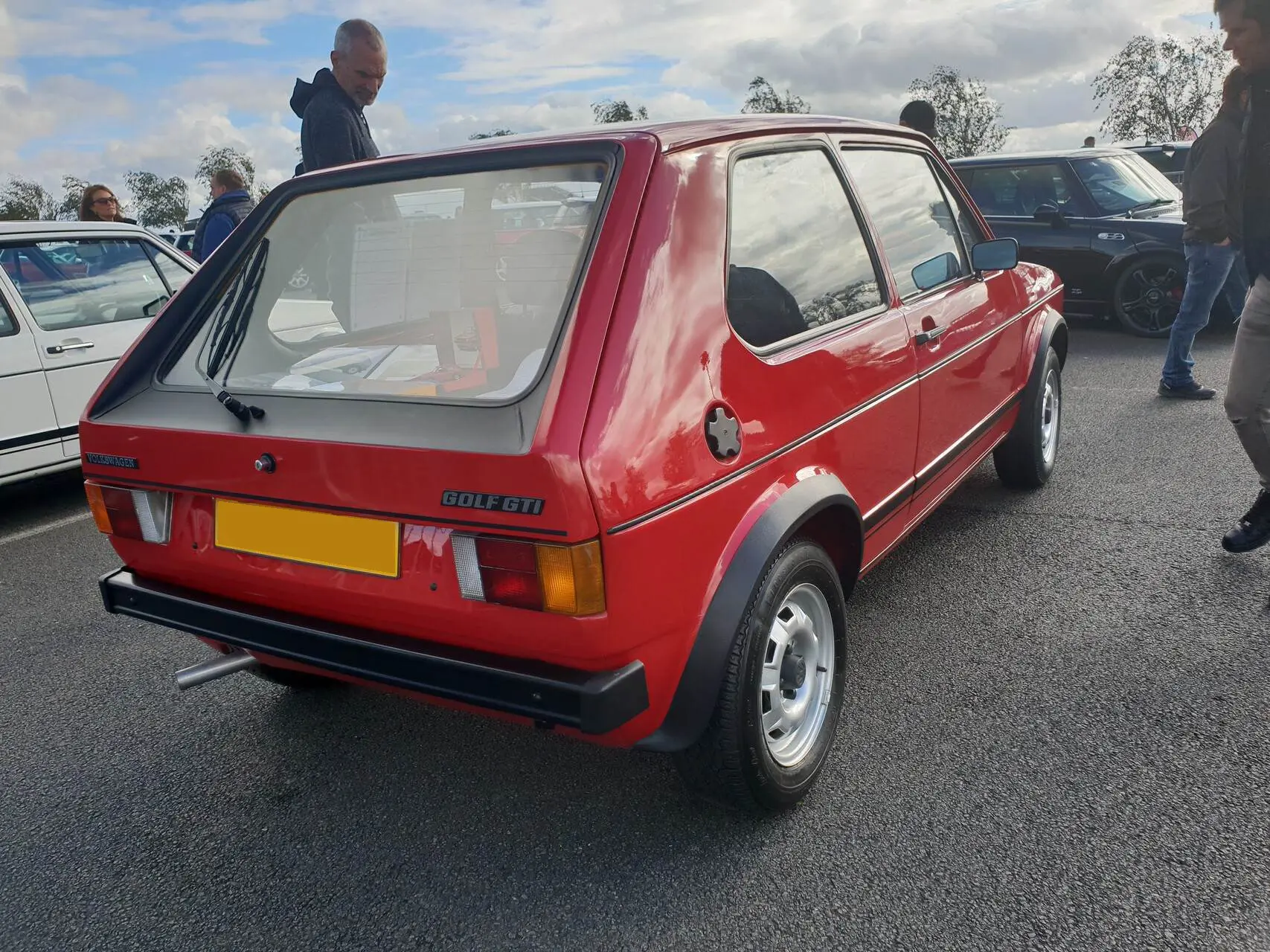MEET THE OWNER – RAJAN PAYMASTER AND THE WORLD’S OLDEST VOLKSWAGEN GOLF GTI
12 May 2023
Rajan’s Golf is not just a superlative example of the Golf GTI Mk. 1, it is the oldest surviving in the world. Every detail is virtually perfect, from the red-edged radiator grille and the tartan upholstery to that ‘golf ball’ gear knob. This is the car that re-defined the term ‘sports hatchback’, despite Volkswagen’s early concerns. According to their former Communications Director, Anton Konrad, there was concern that if VW sold a high-performance Golf at too low a price, “the hooligans would come and bring the whole brand into disrepute!”
Fifty years ago this month, the company’s Chief Press Officer Alfons Löwenberg contacted Volkswagen’s Research and Development office about the possibility of a high-performance version of the forthcoming Golf. The result was the Scirocco-based prototype EA195 with uprated suspension and power from a modified Audi 80 GT B1’s 1,588cc engine.

Wolfsburg’s management was so impressed by the ‘Sport Golf’ that in March 1975 approved a limited production of 5,000 models. VW introduced the Golf GTI at the Frankfurt Motor Show six months later, and German sales commenced in June 1976, the month that Rajan’s Volkswagen departed the factory. He explains:
“I bought it in Germany from a German racing company whose website I accidentally found! I trailered it home, and when I saw a picture of the VIN plate, I identified it as a ‘76’ model year, which ran only until July 1976, so very few were made. As far as I know from registers, speaking to enthusiasts around the world it is the only ‘76’ remaining worldwide and so also the oldest. Its age and manufacture date have been verified by VW Germany and VW UK, for which I have the documents.”
Rajan has restored the Golf to a completely original condition – a considerable challenge. As for road manners:
“I haven’t really driven the GTI since I bought it, as it’s only done 37k km, so it has a very low mileage. These early 76 cars also have unique parts that are now not available new or used, so I dare not drive it. I do have other Mk. 1s that I can drive, so I know what it’s like. The 1.6 engines are revvy and more enjoyable as a classic than the later 1.8s, and although the four-speed boxes can make the engine noisy on motorways, that’s irrelevant to me. The four-speed box also allows it to reach 0-60 in 2nd gear, so it is a little quicker than later five-speeds to 60 and saves changing into 3rd. It is not rapid by today’s standard, but more fun to drive than later-model GTIs. The brakes are better for being LHD, as VW did not originally engineer them for RHD. The conversion required a cross-linkage mechanism to the servo, which introduced play in the system, so it does not have as good a brake pedal feel.”
British imports began in 1978, with 22 GTIs in LHD form. The Daily Telegraph stated, “for sheer driving pleasure it can have few equals, even at £3,986.” The GTI had no direct British rival; the Ford Escort RS2000 Mk. II for £3,519 and the Triumph Dolomite Sprint at £4,113 but these were RWD saloons. “It will zip up to 60 mph in well under 10 seconds, reach a maximum of 110 mph and go round corners with remarkable security on its wider wheels and tyres”, praised The Observer.
Such reviews struck a chord with former Mini Cooper S owners and anyone who rated engineering above ‘Go-Faster’ stripes and medallions. The UK concessionaire began selling right-hand drive models in July 1979, when the Golf Mk.2 succeeded the Mk. 1 four years later VWs such as Rajan’s had created an entire market sector. So naturally, the GTI creates a stir whenever it is in public and:
“People are obviously stunned to see it, especially enthusiasts and those in the know. I only take it to shows and special events, but it doesn’t come out often as I rotate my show cars. The real geeks, of which there are few in the UK, spend ages chatting about the unique parts found on these very early cars, which I am happy to do! It’s a real learning experience for most!”
Back in 2017, I wrote the Golf GTI Mk. 1 would not appeal to the 1970s driver “who thought ‘performance driving’ meant attempting a handbrake turn in Fareham railway station car park while at the wheel of a 1969 Hillman Hunter.” It really is a car for those who appreciate the integrity of its design – which is why Rajan’s VW is such a significant vehicle.
With Thanks To: Rajan Paymaster
